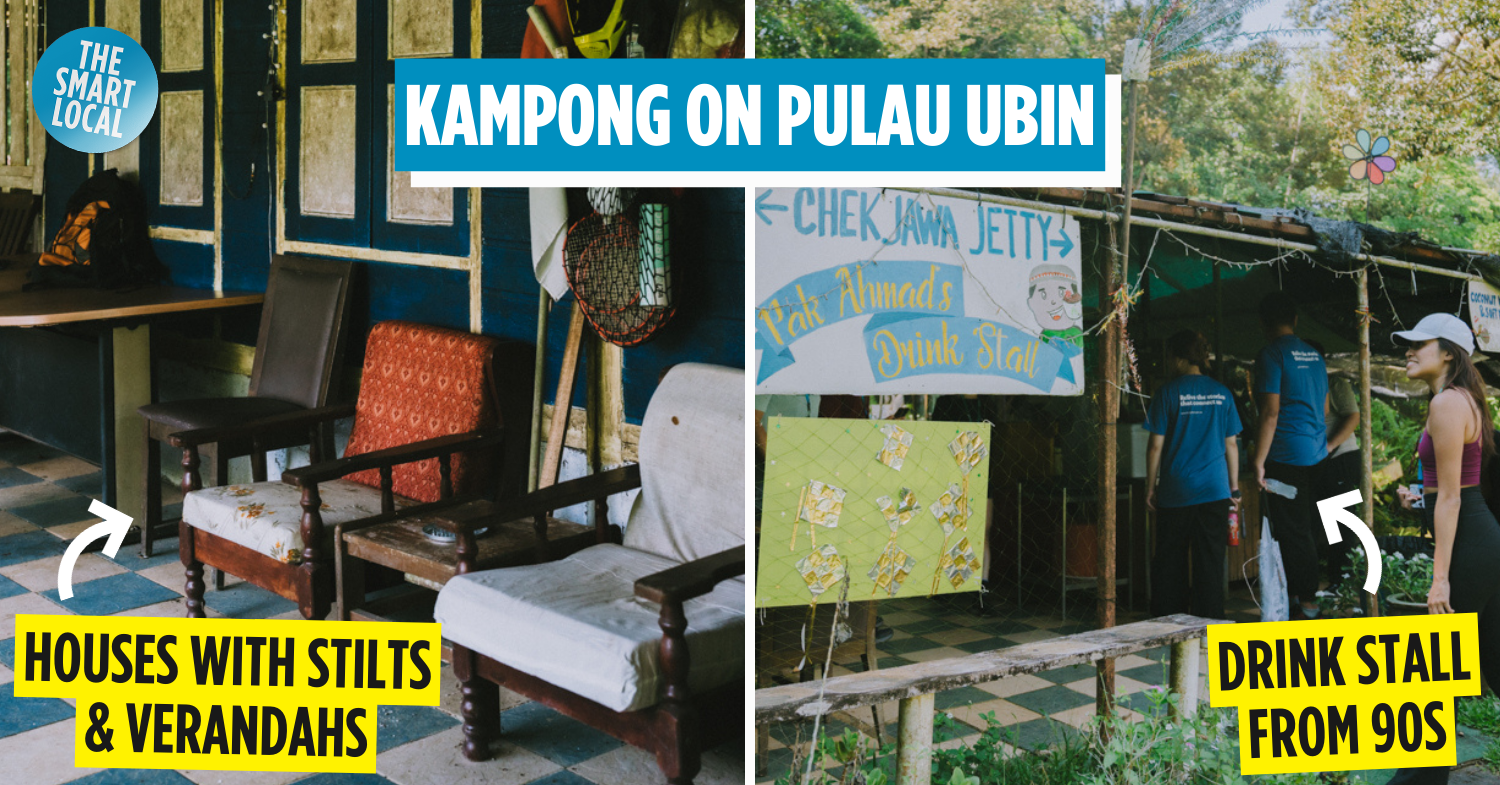Kampong Sungei Durian, last Malay kampong in SG
Growing up, my family would make monthly trips to my maternal grandfather’s kampong in Kota Tinggi, Johor. We’d spend days walking around the forest and hanging out by the river. To me and my siblings, these old-school villages were something you could only experience in Malaysia. It was only when we got older that we realised that these traditional Malay attap houses used to be a common sight in Singapore too.
They’re all gone now, save for Kampong Sungei Durian, the last surviving Malay kampong in Pulau Ubin. So when I found out that the Singapore HeritageFest included the Malay Kampung Heritage Tour, guess who jumped at the opportunity?
Village life in Pulau Ubin
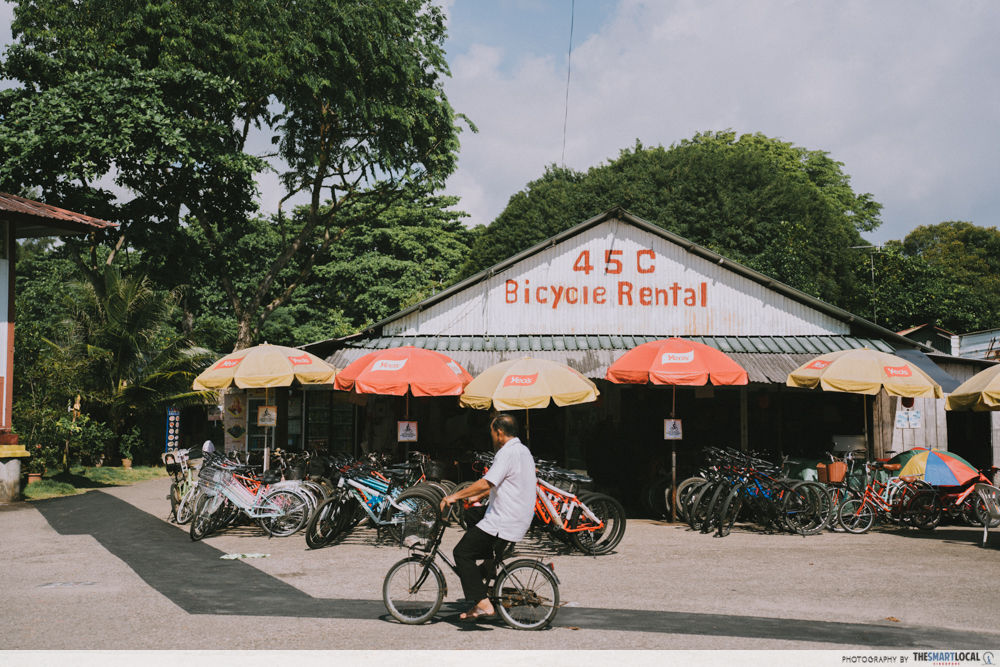
A common sight on Pulau Ubin nowadays.
Pulau Ubin is now synonymous with outdoor activities, whether you’re cycling around the island or hiking Puaka Hill, the highest point. But this tour wasn’t an ordinary hike around Pulau Ubin.
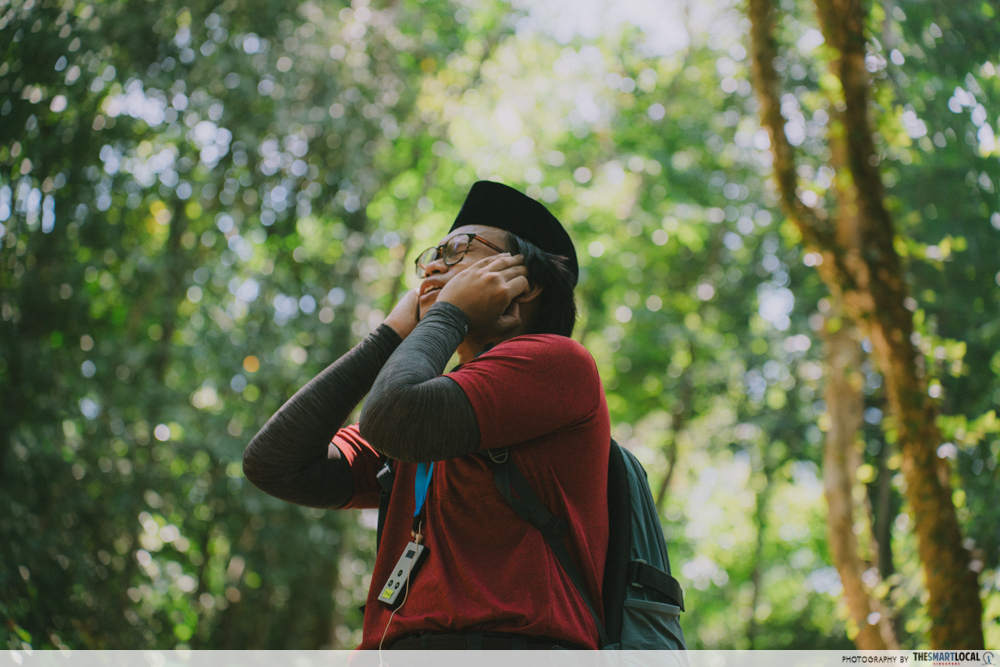
Wan, whose mum lived on the island.
We were led by our tour guide Nor Syazwan bin Abdul Majid, also known as Wan. Wan grew up listening to his mum’s stories about kampong life on the island. The full-time undergraduate student has been working with the Orang Pulau, or village people, community over the past few years to spread awareness about the history of Pulau Ubin.
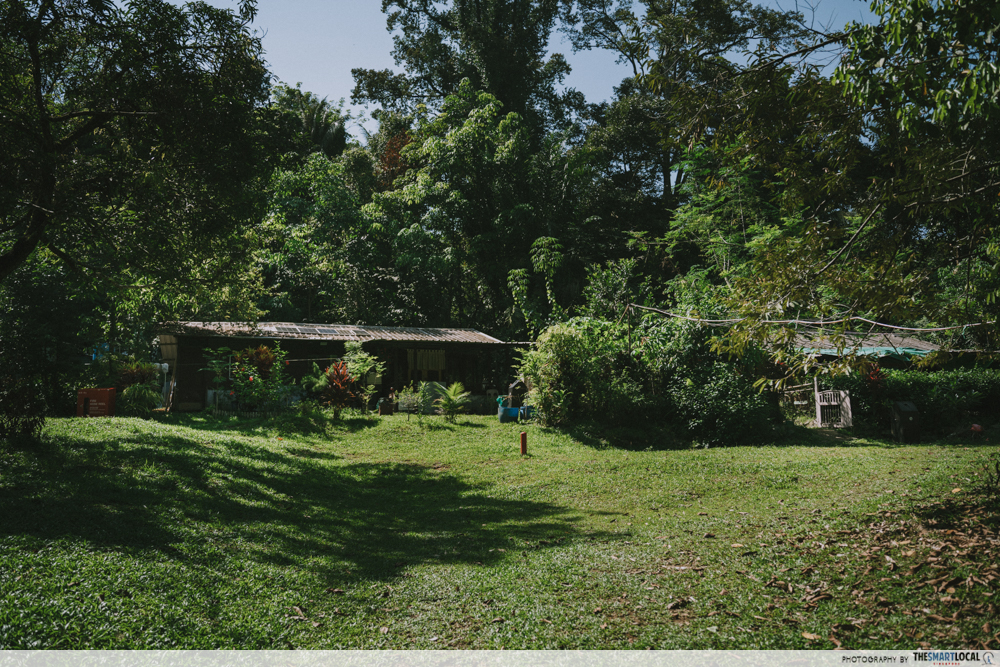
The first thing he told us was that there used to be 6 Malay kampongs on the island. Out of which, only one is left standing. “Kampong Sungei Durian was named after the many durian trees all around the area,” Wan told us as we strolled towards a spacious grassfield.
Behind the field stand kampong houses that look like the ones I’m used to in Malaysia. While there are only 12 houses left today, there used to be 47 back in its heyday. However, most of the villagers were either resettled by the government or moved out on their own accord.
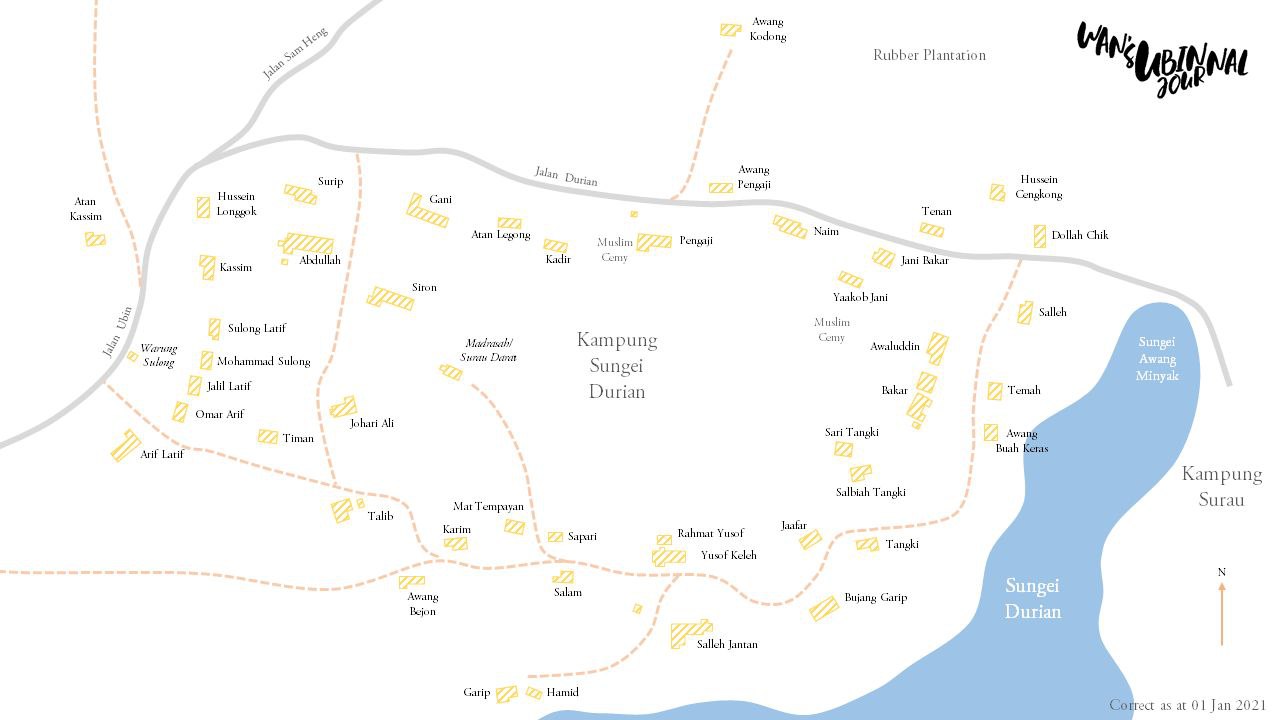
Map of Kampong Sungei Durian in the 1980s with names of all the villagers.
Image credit: Nor Syazwan Bin Abdul Majid
Looking around, it was hard to imagine Kampong Sungei Durian being a lively village in the past. But upon closer inspection, you’d be able to see clues like a ditch that was covered up by NParks and remnants of a sepak takraw court.
“Back in the day, there used to be a cafe called Warung Sulong near the ditch, where you’ll be able to go down and have a nice cup of teh o and mee goreng,” Wan explains.
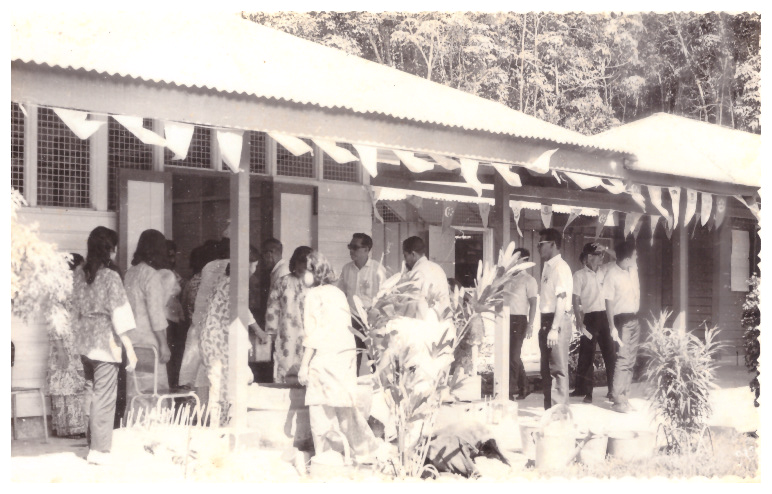
Old photo of Sekolah Melayu Pulau Ubin, which no longer exists now.
Image credit: Pulau Ubin Resident
Besides that, the Malay villagers on Pulau Ubin used to congregate at places on the island like the Pulau Ubin Mosque and Sekolah Melayu Pulau Ubin. The latter was where Wan’s mum and aunt used to go to school.
Who are the villagers in Kampong Sungei Durian?
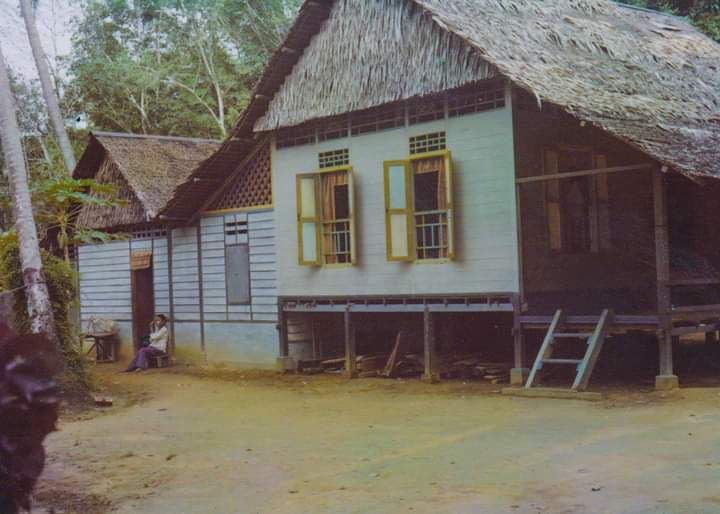
Wan’s grandparents’ house in the 1990s.
Image credit: Nor Syazwan Bin Abdul Majid
You must be wondering if people still live in Kampong Sungei Durian; yes, they do. Today, the youngest resident at Kampong Sungei Durian is in their mid-60s. However, most of them also have their own homes on Singapore’s mainland, only returning on weekends to look after the house on Pulau Ubin.
We also found out that since the 1966 Land Acquisition Act was passed, the land on Pulau Ubin has been acquired by the government. In fact, residents who wish to stay will have to obtain a Temporary Occupation Licence (TOL) from NParks, which is renewed once a year or once every 3 years. This means that the villagers will have to pay rent to the state to continue living there.
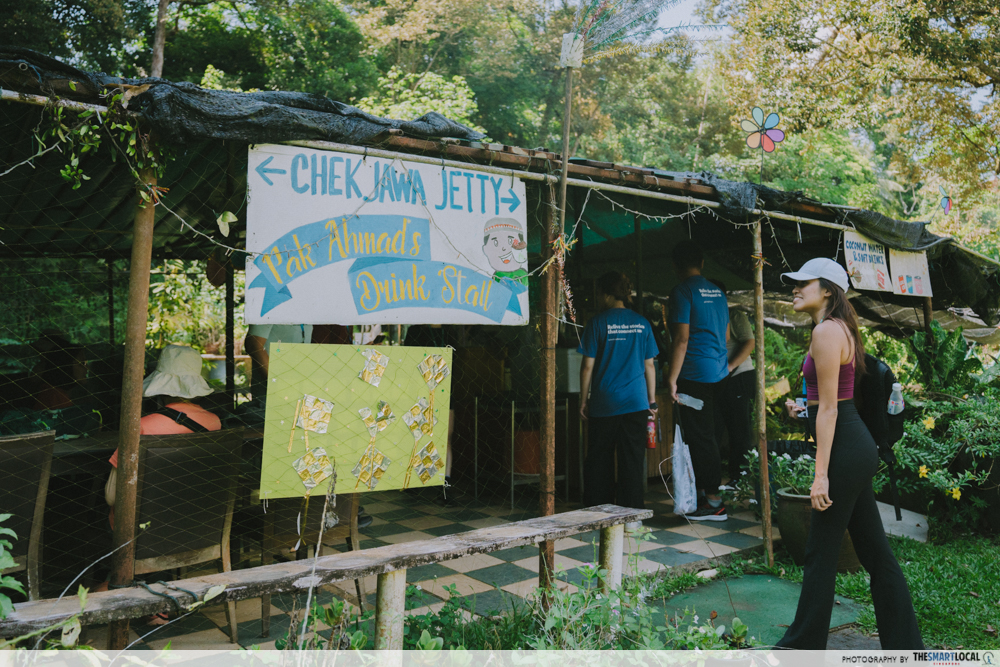
Pak Ahmad’s Drink Stall, which now serves daytrippers to Pulau Ubin.
There’s also Pak Ahmad’s Drink Stall, which was opened in the 1990s. Today, it’s run by his son Khairuddin and sells drinks to those who visit Pulau Ubin for outdoor activities.
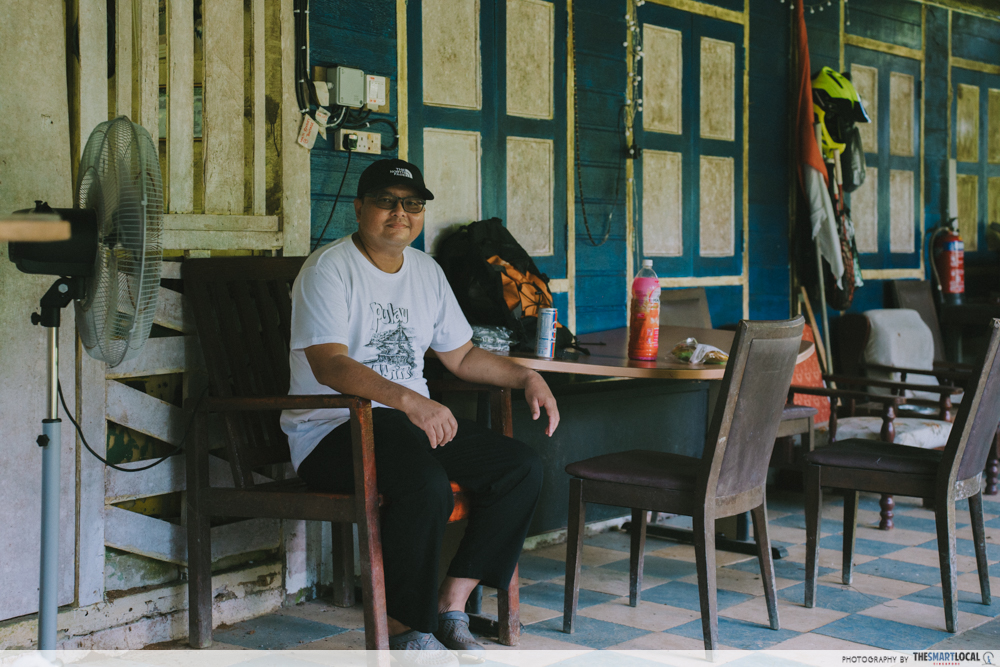
Khairuddin.
The architecture of a kampong house
As we walked further into the forest, we were surprised to see a kampong house there. “This is a rumah panggung, which is a house on stilt,” Wan explains.
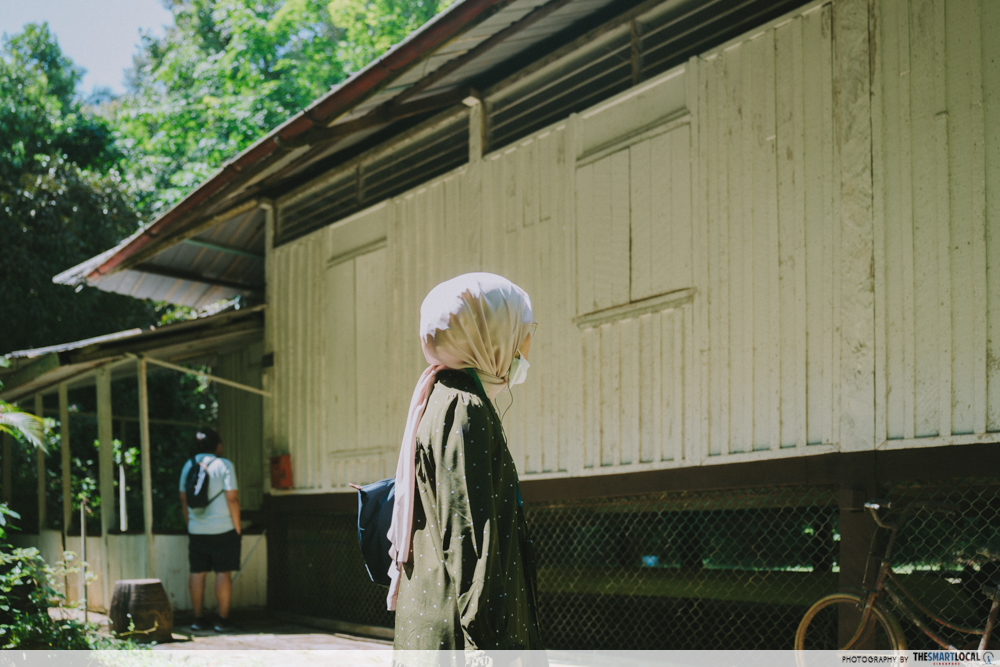
We found out that the architecture of the house isn’t all for aesthetic purposes. Malay kampong houses were built on stilts for 3 main reasons: to minimise flooding, for air circulation, and to prevent venemous creatures like snakes from entering the house.
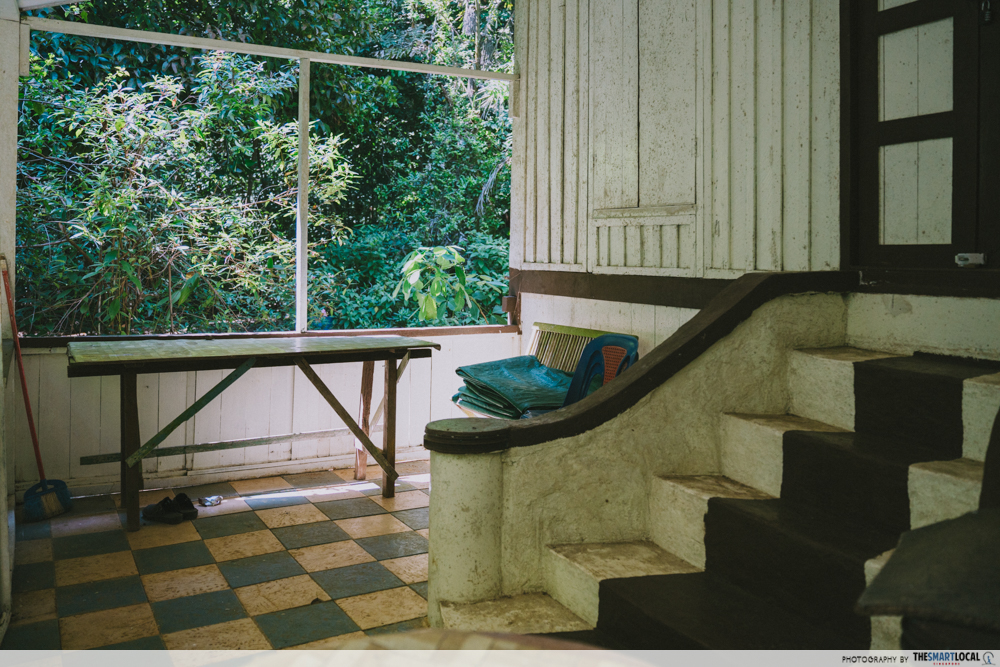
The verandah, which has seen better days.
Besides that, the architecture of a kampong house also has plenty of thought behind it, with each section serving a different purpose. First, there’s the verandah, which is the entryway into the house. This is where the villagers used to socialise with neighbours and passersby. Head up a short flight of stairs from the verandah and you’ll get to the anjung, which often consists of the living room.
The main section is referred to as the rumah ibu, which translates to “mother’s house”. This is an ode to the maternal figure, and shows how important she is to the Malay culture. It’s also where you’ll find the bedrooms.
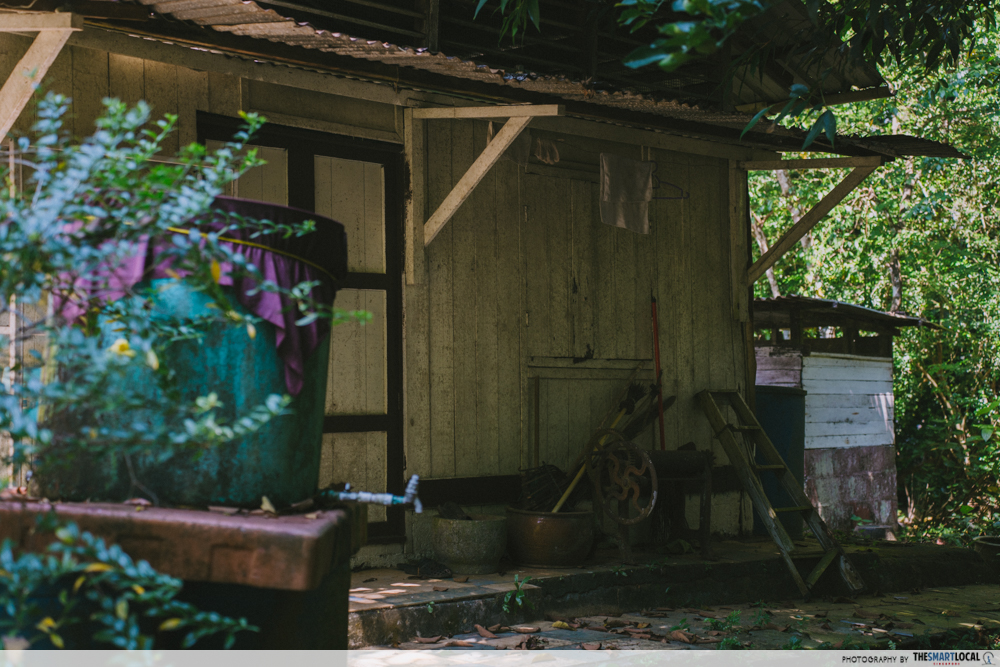
Someone from our group asked why there were 2 different doors to the house. Wan explains that they serve 2 purposes. The front door at the verandah was usually used for “formal” visits. The back door, which leads to the kitchen, is often where neighbours would casually pop by when asking for favours.
In the olden days, families were more traditional. The front door was also often used by men, while women had to enter from the back. This is to prevent gossip spreading amongst other villagers. I thought back about my childhood visits to my grandfather’s kampong, and realised that I did only ever see my female relatives entering from the back door.
What’s the future of Kampong Sungei Durian?
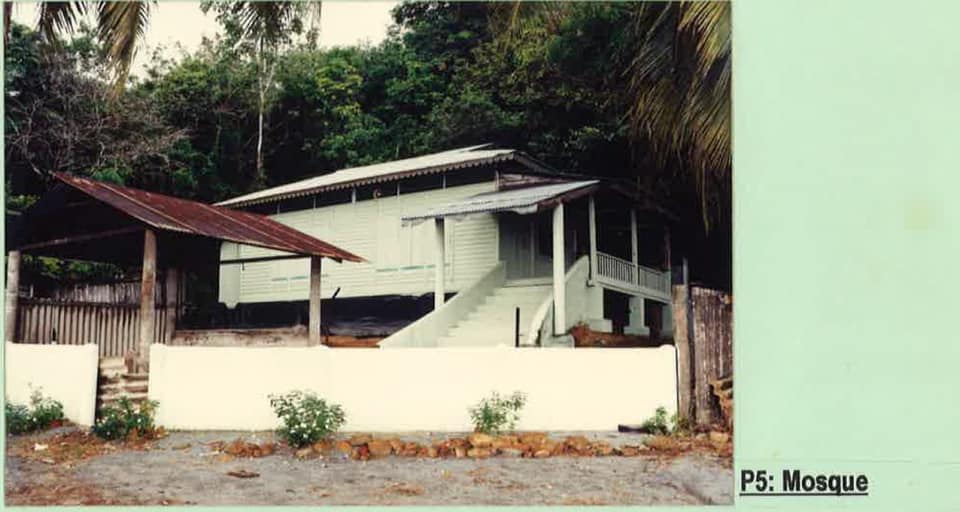
Pulau Ubin Mosque.
Image credit: National Archives Singapore
After checking out other sites on the island, which included the abandoned sites of the other former kampongs and Muslim cemeteries, we came to the end of our tour. In Wan’s parting speech, he hopes that we help to keep the legacy of Ubin’s Orang Pulau alive by advocating for the preservation of Kampong Sungei Durian.
That’s because the future of Kampong Sungei Durian is uncertain for now, but anything could happen, since the land is owned by the government. For now, Wan is working with the community to restore one of the old kampong buildings, House 6J, into a community gallery for visitors.
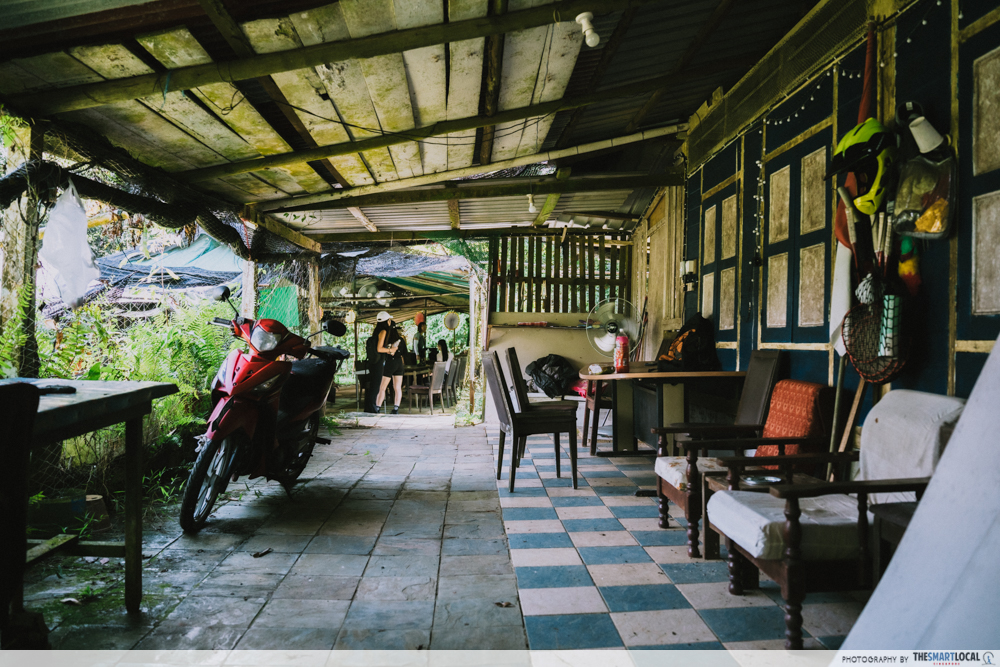
With more BTO projects and HDBs racing vertically to reach the clouds, places like Kampong Sungei Durian and Kampong Lorong Buangkok offer windows into Singapore’s past. And while the Malay Kampong Heritage Tour is fully booked, you can still take a walk around the island for a glimpse of what village life used to be like on Pulau Ubin.
Don’t forget to say hi to the residents there – who knows, they might just share their own stories about this last surviving Malay kampong.
Photography by Huy Pham.
